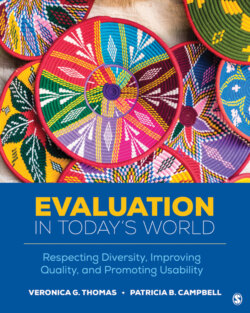Читать книгу Evaluation in Today’s World - Veronica G. Thomas - Страница 76
На сайте Литреса книга снята с продажи.
Case Study: The Compromised Evaluator?
ОглавлениеIn an effort to become the long-term evaluator of a five-year project, an evaluator presents the project in a slightly more favorable light in the Year I Annual Report than in her original draft report submitted to the project administrator.
What ethical violations are present in this case, and how might such violations actually hurt (not help) the project being evaluated?
The third aspect affecting evaluators’ ethical sensitivity is their awareness of the intensity of the issue. Evaluators do not treat all ethical issues the same. A decision must be made whether the ethical dimension is significant or important enough for the evaluator to do something about it. Ethical intensity often plays a role in how an evaluator will act. Intensity pertains not only to the awareness of an ethical issue but also to how important such issues are to various stakeholders. Thomas M. Jones (1991) argues that ethical decision making in organizations is generally a function of six factors, each of which we view as relevant to program evaluation:
Magnitude of consequences: the total harm or benefit that participants or the evaluator can derive from an ethical action
Social consensus: agreement among evaluators or the evaluator, client, and other stakeholders whether a behavior is “good” or “bad”
Probability of effect: the chances that something will happen and result in harm to others
Temporal immediacy: the time between the act and the consequences the act produces
Proximity of effect: the social, psychological, cultural, or physical distance of the decision maker (e.g., evaluator) from the beneficiary or victim (e.g., program stakeholders) of the course of action
Concentration of effects: the number of people affected or how much an action affects the average person (pp. 374–378)
All six factors represent characteristics of the ethical issue itself and are expected to have interactive effects. Jones (1991) theorizes that if any factor increases, it is generally expected that the overall level of intensity will also increase, and vice versa, assuming all remaining components are constant. For example, depending on the extent to which evaluators believe that their unethical behavior will result in an immediate impact (i.e., temporal immediacy), they are more or less likely to engage in such behavior.
